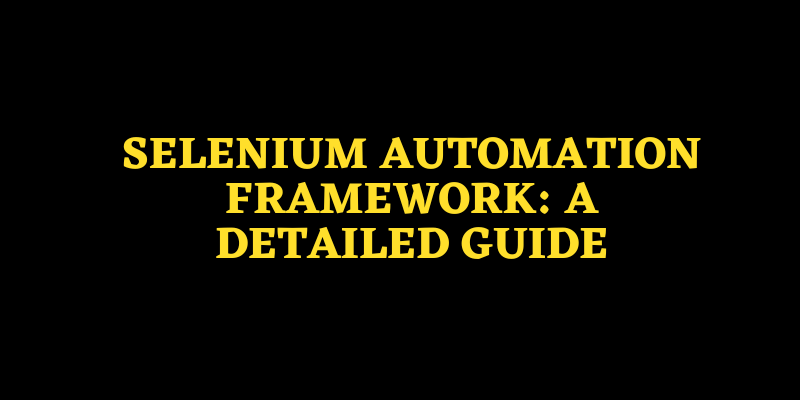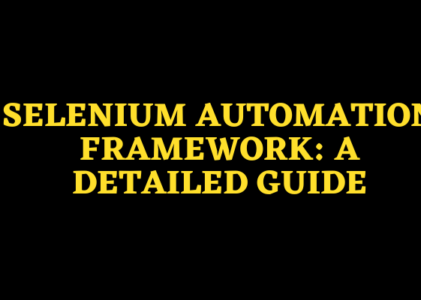Introduction
In this blog, we will discuss the selenium automation frameworks. As customers’ demand for the most recent versions of web and mobile applications grows, developers are forced to consistentlyo work harder than ever to deliver updates every few weeky. As a result, there is now a greater emphasis on automation, which contributes to a shorter software development cycle by speeding up the coding and testing phases.
To learn more about the Selenium automation Frameworks, join Selenium Training in Chennai for the worthy certification and best training.
What is the Selenium Framework?
A group of automated testing tools called the Selenium Framework are built on the JavaScript framework.
- Without requiring any input from the user, it could run the tests directly on the target browser, control the interactions on the necessary web page, and repeat them.
- It does away with time- and effort-intensive repetitive manual testing.
- complies with the continuous delivery workflow principles of Agile and DevOps.
Selenium continues to be a popular testing tool because it satisfies the need for speedy and reliable testing, allowing businesses to save time and money on testing.
Selenium WebDriver
A group of language-specific bindings called Selenium WebDriver, also referred to as Selenium 2.0, is used to drive a browser in the manner that is required. It is the Selenium Remote Control’s replacement and includes an API, library, driver, and framework that all work together to make it possible to run tests.
With the use of bindings, the API converts scripts written in several scripting languages to Selenese, the built-in language of Selenium. The API and these language-specific bindings, including Selenium Java, Selenium Ruby, and Selenium dot Net, are kept in the Library.
These drivers might be tailored to a particular browser, such the Chromedriver for Google Chrome.
Selenium IDE
Selenium IDE is a Chrome and Firefox plugin that can create code in several programming languages and record in-browser interactions naturally.
Java, Python, Ruby, C#, and Selenese are some of these programming languages.
It allows testers to record test scenarios within the IDE and play them out in the browser, where the IDE may repeat them and indicate any code mistakes with a red background.
enables the test engineers to set breakpoints for specific test case debugging.
Each element in the IDE has numerous locators, which guarantees successful execution.
Selenium Online Training will enhance your testing skills and also gain knowledge about Selenium Automation Testing.
Why is Selenium the chosen automation framework?
No matter what browser or device a customer uses, automation testing has multiplied the testing scope. This guarantees a positive user experience. Automation testing was introduced as a result to guarantee cross-browser compatibility.
Selenium Automation Frameworks Types
Based on the functional approach, there are three primary categories of Selenium frameworks:
- Data-driven framework
- Keyword driven framework
- Hybrid framework
1. Data Driven Framework
The various data sets that were developed into an external file (excel sheets) and loaded into the automation testing tool form the basis of the data-driven framework. It is highly challenging to modify these values in the script each time the test is run when the amount of data sets the test framework utilises as input is on the larger side.
2. Keyword Driven Framework
3. Hybrid Driven Framework
Data-driven and keyword-driven frameworks are combined to form Selenium’s hybrid driven framework. The inputs and function list for this framework are saved in distinct files, and it uses various keywords and data sets. It makes use of the same code for many data sets, much like the data-driven framework.
Conclusion
So far, we have discussed the Selenium Automation Frameworks. Testing consumer websites and online applications requires choosing the right testing framework or technology. If the test framework is not frequently utilised, you can avoid seeking help when problems occur. As a result, you should consider this when selecting the framework.
To learn more about Selenium automation, join Selenium Training in Coimbatore at FITA Academy for the best training with career guidance.
Also Check: Why is Java So Popular Among Programmers And Developers?
Comments
0 comments

